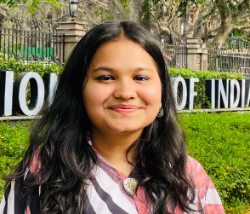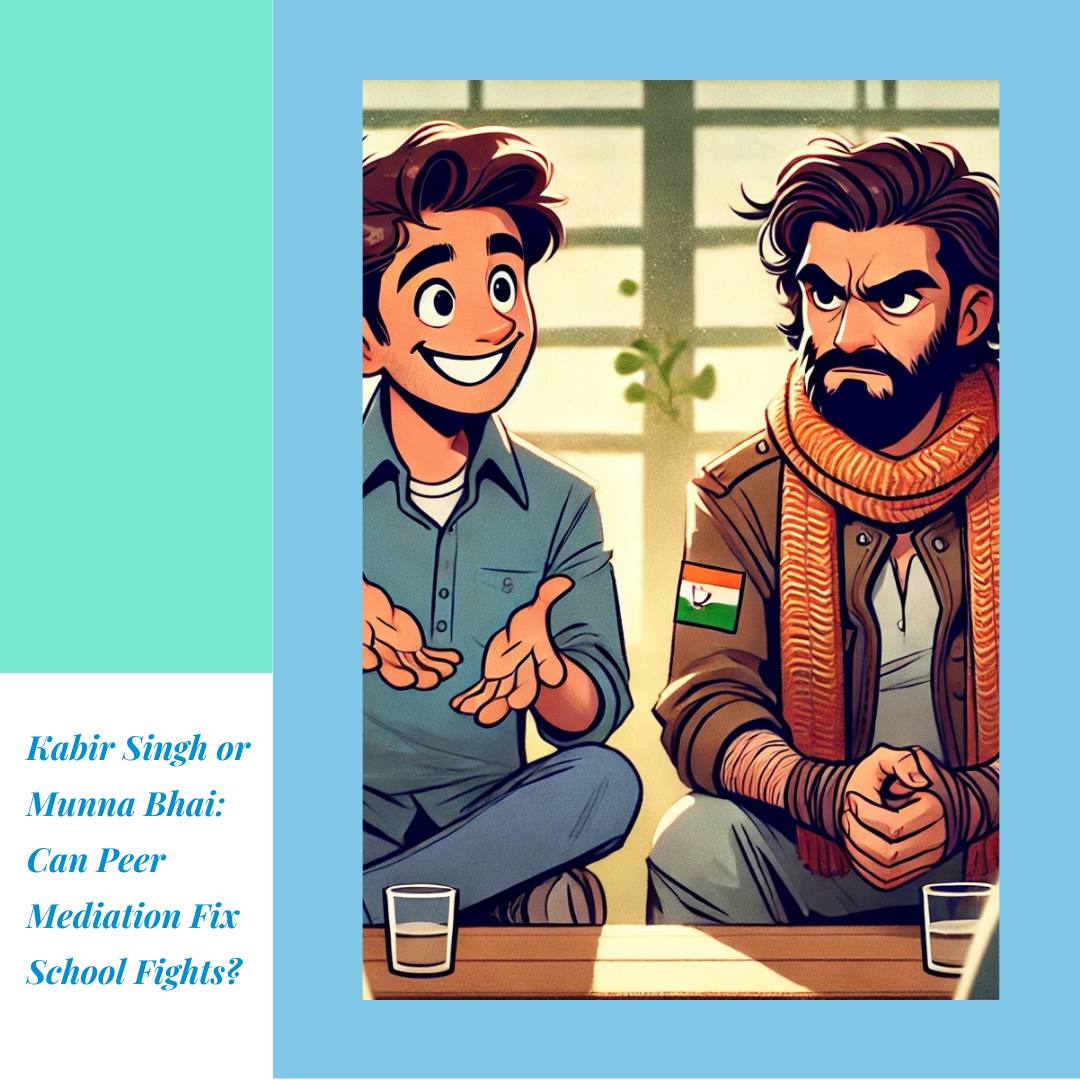Kabir Singh and Munna Bhai MBBS are two all-time epic movies for Indians. These movies showcase how Kabir Singh misuse its power and anger to dominate others in his institution. On the other hand Munna bhai resolving conflicts through dialogue rather than confrontation. Similarly, films like Animal, starring Ranbir Kapoor, and Khuda Haafiz: Chapter 2, featuring Vidyut Jammwal, explore themes of aggression and deep-rooted anger stemming from childhood. But what if these characters had learned the concept of peer mediation at an early age in school? I know, it’s just a movie but interesting it showcases the need for a structured and systematic approach in school education. Here, peer mediation can be this systematic approach which equips students with essential skills that goes beyond the traditional discipline lessons taught in schools.
Now, picture this: Two students in an Indian school get into a heated argument. A minor disagreement escalates into a physical fight. The teacher steps in, punishes both, gives them a lecture on discipline ethics and moves on. But has the conflict truly been resolved? Or is it just simmering under the surface, ready to explode another day, perhaps in a more disastrous way? The truth is, our schools often focus more on punishing conflicts rather than resolving them. This is where peer mediation comes into play, this is not just a concept on paper but an important skill that works and moves beyond mere discipline and punishment to address the real issues behind school fights. It helps not just in school but throughout their lives. That’s why, I address it as “Life skill”.
Meaning of Peer Mediation
The typical google searched definition of peer mediation describes it as a structured conflict resolution process where trained students referred as peer mediators help their schoolmates to resolve disputes amicably. The USP is it purely focuses on communication, understanding, and problem-solving rather than punishment and traditional disciple lectures. Unlike traditional disciplinary measures, peer mediation ensures that both parties walk away with a sense of resolution rather than resentment.
Where Did Peer Mediation Originate?
This emerged in the United States during the late 20th century as part of the movement towards restorative justice in schools where, collectively American educators and psychologists recognized that punishments often failed to prevent conflicts from recurring. And it often builds up like a dormant volcano in the minds of students which can erupt any day, in any manner. With this observation, Western Schools began adopting peer mediation programs to foster a culture of open dialogue.
Can This Western Concept Work in India?
Indian students are no strangers to conflict, whether it’s ragging in colleges or bullying in schools. Instances of conflict, aggression of students in Indian schools can be seen from these cases: Delhi School Stabbing Case (2025), The Gurugram School Bullying Case (2019) and these cases highlight the bullying, aggression, and mental health struggles among Indian students. And, in order to conquer this many Indian schools follow a more authoritative approach like suspension and expulsion to discipline that do not resolve underlying issues. However, this doesn’t mean that peer mediation cannot work in India, it just needs to be adapted to fit the country’s educational framework.
Now, the real question is not whether this works in India or whether India is ready, but how Indian schools can prepare themselves for peer mediation. For that, Schools need to come up with a strategic plan which may include training teachers via Faculty development programmes and counselling to parents and students about non-violent conflict resolution. This will give a platform for students to express themselves, understand different perspectives, and develop emotional intelligence. This will not just fix fights but also foster leadership, empathy, and communication skills, qualities essential for a peaceful society. This is how implementing peer mediation programs will shift in mindset, but it is far from impractical.
Already some schools and NGOs in India have started with restorative practices in conflict resolution. For instance, some schools in Delhi, Dehradun, Bangalore, and Mumbai have begun pilot programs, a government body called Gandhi smriti and Darshan samiti also started an orientation programme for educating Indians about peer mediation. This evidenced that peer mediation is no longer just an experimental concept but an urgent necessity. Though it is at the infancy stage and implemented by good private schools only. However, if the government supports and more organisations work in implementing peer mediation in all the Indian schools, be it rural or urban. Then, we may have a generation/youth with calmness and enthusiasm for conflict resolution rather than full of aggression.
Conclusion
A fight between two students may seem trivial to anyone, but how we handle it shapes the future mindset of an entire generation. Do we want more Kabir Singhs, who bottle up emotions and explode later, or Munna Bhais, who resolve conflicts with empathy and wisdom? The choice is ours. Not just this, if we compare other real incidents in reality beyond these movies, peer mediation is a skill that needs to be learned by students beyond the traditional discipline lessons that we learn in schools.
Author
-

Khushi is a 4th Year law student at MAIMS and ADR Advocacy head at Maldives Moot court Society (MMCS)
View all posts


